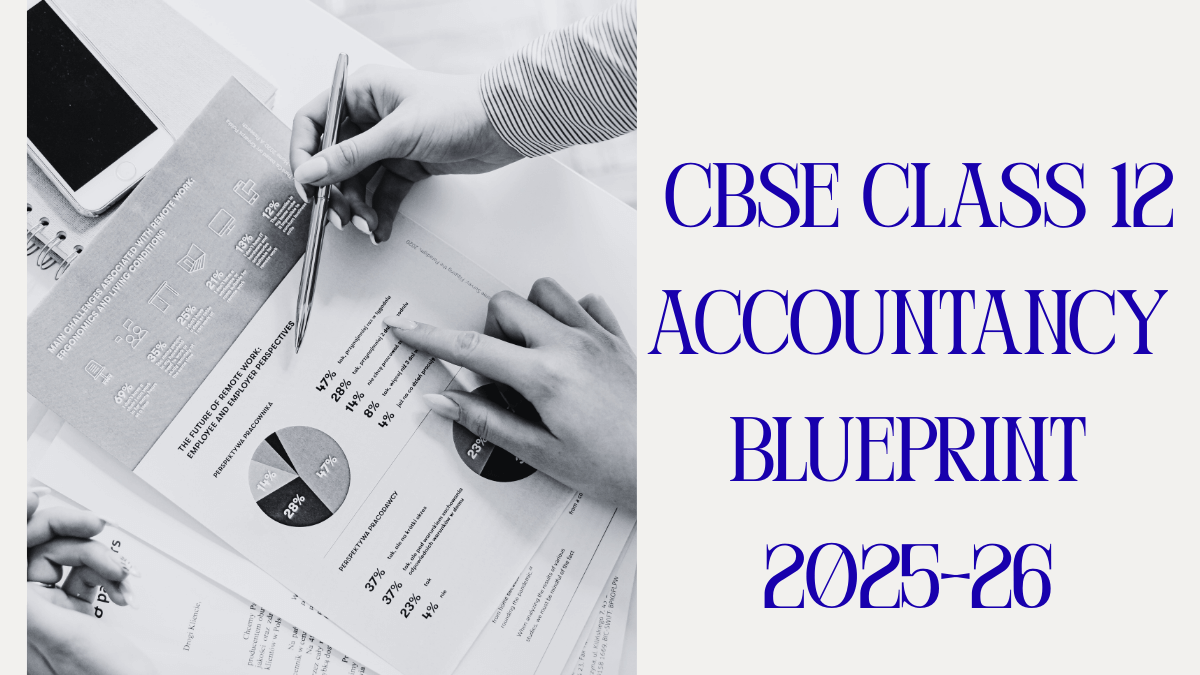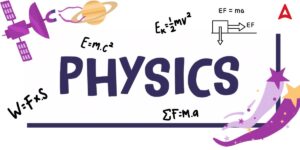The CBSE Class 12 Accountancy Blueprint 2025 focuses on clarifying the theory and practical knowledge of the Accountancy curriculum and paper pattern. The Accountancy Exam 2026 has two key components:
- Theory Paper of 80 marks
- Project Work of 20 marks
The Class 12 Accounts theory paper tests the student’s understanding of accounting concepts, methods, and applications. Project work is an internal assessment that evaluates students’ capacity to apply principles in real-world circumstances while also developing critical thinking and analytical abilities. Students can create a solid foundation in the accountancy subject and optimize their scoring potential by focusing on the marking structure, topic-specific weightage, and key topics mentioned in this article.
CBSE Class 12 Accountancy Blueprint 2025-26
Achieving a high mark on the Class 12th Accountancy board exam 2026 is easily achievable with planned preparation and consistent practice. Here you can see the CBSE Class 12 Accountancy Blueprint 2025-26 paper pattern.
| CBSE Class 12 Accountancy Blueprint 2025 Marks vs Questions | ||||
| Question Type | Number of Questions | Marks per Question | Total Marks | Internal Choice Provided |
| 1-mark Questions | 20 | 1 | 20 | 7 questions |
| 3-mark Questions | 6 | 3 | 18 | 2 questions |
| 4-mark Questions | 3 | 4 | 12 | 1 question |
| 6-mark Questions | 6 | 6 | 30 | 2 questions |
Class 12 Accountancy Blueprint 2025
The Central Board of Secondary Education’s (CBSE) current curriculum weightage arrangement divides CBSE Class 12 Accountancy 2025 Blueprint into a theory/written paper and a practical/internal assessment. The table below provides CBSE Class 12 Accountancy unit- and chapter-wise weightage, allowing students to better prepare for the next test.
| CBSE Class 12 Accountancy Topic-Wise Weightage Distribution | |||
| Units | Marks | ||
| Part A | Accounting for Partnership Firms and Companies | ||
| Unit 1. Accounting for Partnership Firms | 36 | ||
| Unit 2. Accounting for Companies | 24 | ||
| Total | 60 | ||
| Part B | Financial Statement Analysis | ||
| Unit 3. Analysis of Financial Statements | 12 | ||
| Unit 4. Cash Flow Statement | 8 | ||
| Total | 20 | ||
| Part C | Project Work | 20 | |
| Project work will include: | |||
| Project File | 12 Marks | ||
| Viva Voce | 8 Marks | ||
| Or | |||
| Part B | Computerized Accounting | ||
| Unit 4. Computerized Accounting | 20 | ||
| Part C | Practical Work | 20 | |
| Practical work will include: | |||
| Practical File- 12 Marks | |||
| Viva Voce- 8 Marks | |||
Accountancy 12th Blueprint of Question Paper 2025-26
In the Accountancy 12th Question Paper, Part A is mandatory for all candidates, whereas Part B offers two options: (i) Financial Statement Analysis and (ii) Computerized Accounting.
| Section | Question Numbers | Marks per Question | Total Marks |
|
Part A (Compulsory for all)
|
Questions 1 to 16 | 1 mark | 16 marks |
| Questions 17 to 20 | 3 marks | 12 marks | |
| Questions 21 to 22 | 4 marks | 8 marks | |
| Questions 23 to 26 | 6 marks | 24 marks | |
| Part B (Choose one option only) | |||
|
Option (i): Analysis of Financial Statements
|
Questions 27 to 30 | 1 mark | 4 marks |
| Questions 31 to 32 | 3 marks | 6 marks | |
| Question 33 | 4 marks | 4 marks | |
| Question 34 | 6 marks | 6 marks | |
|
Option (ii): Computerised Accounting
|
Questions 27 to 30 | 1 mark | 4 marks |
| Questions 31 to 32 | 3 marks | 6 marks | |
| Question 33 | 4 marks | 4 marks | |
| Question 34 | 6 marks | 6 marks | |
| Total Marks | 80 marks | ||
CBSE Class 12 Accountancy Blueprint: Typology
CBSE Class 12 Accountancy exam asks questions based on 3 types: students’ understanding, application, and Evaluation.
| CBSE Class 12 Accountancy Question Paper Typology 2024-25 | |||
| S. No | Typology of Questions | Marks | Percentage |
| 1 | Remembering and Understanding: Exhibit memory of previously learned material by recalling facts, terms, basic concepts, and answers. Demonstrate understanding of facts and ideas by organizing, comparing, translating, interpreting, giving descriptions, and stating main ideas |
44 | 55% |
| 2 | Applying: Solve problems to new situations by applying acquired knowledge, facts, techniques and rules in a different way. | 19 | 23.75% |
| 3 | Analysing, Evaluating and Creating: Examine and break information into parts by identifying motives or causes. Make inferences and find evidence to support generalizations. Present and defend opinions by making judgments about information, validity of ideas, or quality of work based on a set of criteria. Compile information together in a different way by combining elements in a new pattern or proposing alternative solutions. |
17 | 21.25% |
| TOTAL | 80 | 100% | |










 CUET Agriculture Syllabus 2026, Pattern,...
CUET Agriculture Syllabus 2026, Pattern,...
 CUET Maths Syllabus 2026 PDF Download - ...
CUET Maths Syllabus 2026 PDF Download - ...
 CUET Physics Syllabus 2026 for PCB and P...
CUET Physics Syllabus 2026 for PCB and P...







